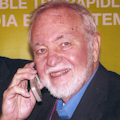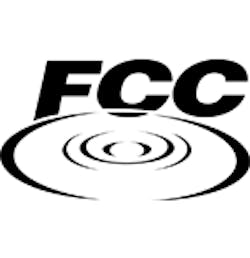The Federal Communications Commission (FCC) has issued its Second Memorandum Opinion and Order (MO&O), which authorizes the use of unused TV channels as unlicensed spectrum for new wireless applications such as broadband connectivity and other short-range applications. Many applications will be similar to the Wi-Fi or IEEE 802.11 WLAN wireless networking that’s commonly used to talk to corporate access points or to public hotspots for Internet access and e-mail. Incidentally, the vote of the commissioners was 5 to 0 in favor of the ruling, making it a rare bipartisan agreement.
The white space spectrum technically extends across the TV spectrum from 54 to 698 MHz. However, most of the spectrum to be used is in the 500-MHz range and above. With its longer wavelength, this spectrum permits greater transmission range for the same amount of power like that used in higher-frequency services like Wi-Fi in the 2.4-GHz band. The signals travel farther and have better penetrating power, providing a very reliable wireless link.
While common Wi-Fi ranges are typically less than 100 meters, white space transmissions can reach as far as several miles depending upon terrain and antenna height. The exact white space frequencies available depend upon the physical location of the radio and which frequencies the local TV channels use. Radios will be able to determine the open frequency bands so they won’t interfere with local TV stations. A national database that details channel information for each local station is being established.
The new directive eliminates the once expected requirement that white space radios incorporate geolocation and database access as well as sensing technology to detect the signals of TV stations and low-power auxiliary service stations (wireless microphones). Only the database is now required. The directive also requires wireless microphone users who seek to register with the TV band databases to certify that they will use all available channels from 7 through 51 prior to requesting registration. Requests to register with the database will be public, allowing interested parties to weigh in on any given request.
The FCC is also ensuring that existing services are protected from interference from the use of white spaces in various ways. For example, the MO&Oreserves two vacant UHF channels for wireless microphones and other low-power auxiliary service devices in all areas of the country. It also maintains a reasonable separation distance between TV white space devices and wireless microphones that are permitted to be registered in the database.
TV white spaces are prime spectrum because their signals travel well, making them ideally suited for mobile wireless devices. Unlocking this valuable spectrum will provide the opportunity for new industries to be created, generate new American jobs, and fuel new investment and innovation.
The National Broadband Plan released earlier in the year indicated the importance of unlicensed spectrum in creating opportunities for new technologies and recommended that the FCC complete the TV white spaces proceeding as soon as possible. Now that it has done so, the FCC can look forward to a flurry of activity in developing new equipment and services.
In the FCC’s announcement, FCC chair Julius Genachowski used the term “Super Wi-Fi” to describe the forthcoming wireless devices and services. He should have said Super 802.11, as that is the correct designation of the IEEE’s WLAN radio standard and protocol. Wi-Fi is a trade name of the Wi-Fi Alliance, which tests and certifies 802.11 products to ensure compliance with the standard and interoperability between products of all vendors. But Wi-Fi has become the go-to name for that service.
Continue on next page
Incidentally, the IEEE already has a working group looking at a revised 802.11 standard designated af that will create new radio standards that will match up to the traditional 802.11 protocol and media access control (MAC) layer. Look for that in a couple years.
Overall, the general feeling of the industry is positive, as the new spectrum will spawn all sorts of new radios and other paraphernalia and services. White space radios will no doubt play a huge role in implementing the National Broadband Plan. Only the National Association of Broadcasters (NAB) is unhappy, as it fought this release of spectrum for years saying it will only interfere with TV broadcasts. I doubt that will happen, as we do have the technology to see that such interference does not occur.
For more details, go directly to the FCC’s Web site. Wonks who want to know all the gory details can print out the 88-page order itself, designated 10-174. I did. It’s great reading.
About the Author

Lou Frenzel
Technical Contributing Editor
Lou Frenzel is a Contributing Technology Editor for Electronic Design Magazine where he writes articles and the blog Communique and other online material on the wireless, networking, and communications sectors. Lou interviews executives and engineers, attends conferences, and researches multiple areas. Lou has been writing in some capacity for ED since 2000.
Lou has 25+ years experience in the electronics industry as an engineer and manager. He has held VP level positions with Heathkit, McGraw Hill, and has 9 years of college teaching experience. Lou holds a bachelor’s degree from the University of Houston and a master’s degree from the University of Maryland. He is author of 28 books on computer and electronic subjects and lives in Bulverde, TX with his wife Joan. His website is www.loufrenzel.com.
